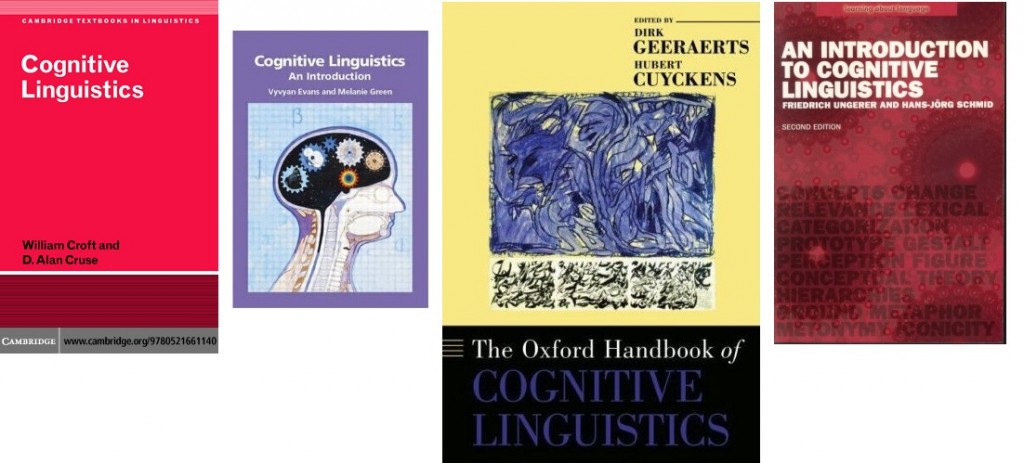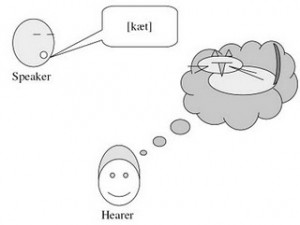Evolang is busy this year - 4 parallel sessions and over 50 posters. We'll be positing a series of previews to help you decide what to go and see. If you'd like to post a preview of your work, get in touch and we'll give you a guest slot.
Michael Pleyer Cognitive Construal, Mental Spaces, and the Evolution of Language and Cognition Poster Session 1, 17:20-19:20, "Hall" (2F), 14th March
Perspective-taking and -setting in
language, cognition and interaction is crucial to the creation of meaning and to how people share knowledge and experiences. As I’ve already written about on this blog (e.g.
here,
here,
here), it probably also played an important part in the story of how human language and cognition came to be. In my poster presentation I argue that a particular school of linguistic thought,
Cognitive Linguistics (e.g.
Croft & Cruse 2004;
Evans & Green 2006;
Geeraerts & Cuyckens 2007;
Ungerer & Schmid 2006), has quite a lot to say about the
structure and cognitive foundations of perspective-taking and -setting in language.

Therefore an
interdisciplinary dialogue between Cognitive Linguistics and research on the evolution of language might prove highly profitable. To illustrate this point, I offer an example of one potential candidate for such an interdisciplinary dialogue, so-called
Blending Theory (e.g.
Fauconnier & Turner 2002), which, I argue, can serve as a useful model for the
kind of representational apparatus that
needed to evolve in the human lineage to support linguistic interaction. In this post I will not say much about Blending Theory (go see my poster for that ;-) or browse
here ), but I want to elaborate a bit on Cognitive Linguistics and why it is a promising school of thought for language evolution research, something which I also elaborate on in my proceedings paper.
So what is Cognitive Linguistics?Evans & Green (2006: 50), define Cognitive Linguistics as
“the study of language in a way that is compatible with what is known about the human mind, treating language as reflecting and revealing the mind.”
Cognitive Linguistics sees language as tightly integrated with human cognition. What is more, a core assumption of Cognitive Linguistics is that principles inherent in language can be seen as instantiations of more general principles of human cognition. This means that language is seen as drawing on mechanisms and principles that are not language-specific but general to cognition, like conceptualisation, categorization, entrenchment, routinization, and so forth.
From the point of view of the speaker, the most important function of language is that it expresses conceptualizations, i.e. mental representations. From the point of view of the hearer, linguistic utterances then serve as prompts for the dynamic construction of a mental representation. Crucially, this process of constructing a mental representation is fundamentally tied to human cognition and our knowledge of the world around us.

“Language is only the tip of a spectacular cognitive iceberg, and when we engage in any language activity, we draw unconsciously on vast cognitive and cultural resources, call up innumerable models and frames, set up multiple connections, coordinate large arrays of information, and engage in creative mappings, transfers, and elaborations.”
Now what is especially important about linguistic interaction are the following properties of language: Linguistic utterances
- organize conceptual content with respect to a particular vantage point and perspective
- construe the world in a specific way
- embody a particular perspective onto it (cf. Geeraerts 2006)
- serve as prompts for the allocation of attention to a particular aspect of the cognitive representation evoked in the listener (cf. Talmy 2007)
As "
your theory of language evolution depends on your theory of language" (
Jackendoff 2010), the following aspects of Cognitive Linguistics seem to be most important to evolutionary accounts of language:
- the emphasis CL puts on the conceptual, interactive, symbolic and perspectival dimension of language and
- the concept of cognitive construal operations, which are seen as one of the most important aspects involved in language use and understanding.
Construal operations refer to the specific ways in which a language can portray events and states of affairs from certain perspectives. They include things like expressing different viewing frames on a situation (e.g. "The train goes from Norwich to Peterborough” static and focusing on the whole journey vs. “The train is going from Norwich to Peterborough” dynamic, and only focussing on part of the journey vs. “); construing things at different levels of granularity (animals vs. mammal vs dog vs pug vs black pug vs Rico), spatial perspective (“e.g. “We are going to your party” with the speaker being the ‘deictic centre’ vs. “I’m coming to your party” with the hearer being the “deictic centre” towards who the movement is directed); degrees of involvement or subjectivity/objectivity in a situation (e.g. “the team are really looking forward to the derby” vs. “me and my mates are really looking forward to the derby”) words to denote different aspects of a situation (e.g.: ‘cost,’ ‘charge,’ ‘spend,’ ‘pay,’ ‘sell,’, ‘buy’ for a commercial transaction), and so forth (cf. Radden & Dirven 2007).

And it is this perspectival nature of language that might be most relevant from an evolutionary point of view:
How and when did the capacity (or set of capacities) evolve that allowed us to communicate and share our perspective on things and co-construct a joint perspective on topics?
From a CL point of view, two things are important here: the specific of construal operations of any invididual language certainly have evolved through
cultural transmission (cf.
Heine & Kuteva 2007;
Christiansen & Chater 2008;
Kirby 2012, see also
here). But all construal operations are thought to be instantiations of and to rely on
general cognitive capacities. These basic cognitive abilities include, for example,
assigning prominence to certain foregrounded aspects of a conceptualization while backgrounding others,
developing a shared point of view and t
aking different perspectives on the same topic.
While some Cognitive Linguists think the story ends here, I share the view that we need
empirical and psychological work as well as
evolutionary considerations to spell out in more detail
what these grounding cognitive capacities look like,
how they work and
how they support language (cf. e.g.
Gonzáles-Márquzez et al. 2007). Because from the perspective of Cognitive Linguistics, these are some of the
most important questions that need to be addressed in tackling the
evolution of language and cognition.




No comments:
Post a Comment